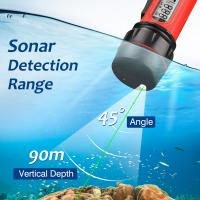Are Electron Microscopes Unsafe ?
Electron microscopes are generally safe to use when proper safety protocols are followed. However, they do require special precautions due to the high voltage and vacuum conditions used to operate them. Exposure to high voltage can be dangerous, and the vacuum conditions can cause the release of toxic gases or chemicals if not properly handled. Additionally, the electron beam can cause damage to biological samples if the beam intensity is too high or the exposure time is too long. Therefore, it is important to follow all safety guidelines and receive proper training before operating an electron microscope.
1、 Radiation exposure risks
Electron microscopes are generally considered safe to use, but there are some radiation exposure risks associated with their operation. The electron beam used in these microscopes can produce X-rays, which can be harmful to human health if exposure levels are too high. However, modern electron microscopes are designed with safety features to minimize these risks.
One of the main safety features of electron microscopes is the use of shielding materials to protect users from radiation exposure. The microscope chamber is typically made of thick metal walls that can absorb X-rays and prevent them from escaping. Additionally, many electron microscopes are equipped with radiation detectors that can alert users if radiation levels become too high.
Another safety feature of electron microscopes is the use of low-voltage electron beams. By using lower voltages, the risk of X-ray production is reduced, which in turn reduces the risk of radiation exposure. Additionally, many modern electron microscopes are equipped with software that can automatically adjust the voltage based on the sample being analyzed, further reducing the risk of X-ray production.
Overall, while there are some radiation exposure risks associated with electron microscopes, these risks are generally considered to be low. With proper safety precautions and the use of modern equipment, the risks can be minimized, making electron microscopes a safe and valuable tool for scientific research.
2、 Biological sample hazards
Biological sample hazards are a concern when using electron microscopes. The high-energy electron beam used in electron microscopes can damage biological samples, leading to artifacts and inaccurate results. Additionally, the use of electron microscopes requires the use of fixatives and stains, which can be toxic and pose a hazard to researchers.
However, when used properly, electron microscopes are generally considered safe. The use of personal protective equipment, such as gloves and lab coats, can help minimize exposure to hazardous materials. Additionally, many modern electron microscopes are equipped with safety features, such as interlocks and ventilation systems, to further reduce the risk of exposure.
It is important to note that the safety of electron microscopes is an ongoing topic of research and discussion. Recent studies have highlighted the potential for electron microscopes to generate reactive oxygen species, which can damage biological samples and pose a hazard to researchers. However, these studies also suggest that proper sample preparation and handling can mitigate these risks.
Overall, while there are potential hazards associated with the use of electron microscopes, they can be used safely with proper precautions and training. Researchers should be aware of the potential risks and take appropriate measures to minimize exposure to hazardous materials.
3、 Chemical sample hazards
"Are electron microscopes unsafe?" is a common question that arises due to the high energy electrons used in the imaging process. However, modern electron microscopes are designed with safety features to prevent any harm to the operator or the environment. The high vacuum conditions inside the microscope prevent any exposure to harmful gases or particles, and the electron beam is contained within the instrument. Additionally, operators are required to wear protective gear such as gloves and lab coats to prevent any accidental exposure.
On the other hand, "Chemical sample hazards" are a real concern when using electron microscopes. Samples may contain hazardous chemicals that can pose a risk to the operator or the environment. It is important to handle and dispose of these samples properly to prevent any harm. Operators should be trained in proper handling techniques and should be aware of the potential hazards associated with the samples they are working with.
In recent years, there has been a growing concern about the potential health effects of exposure to nanoparticles, which are often studied using electron microscopes. While the risks are still being studied, it is important for operators to take precautions such as wearing protective gear and working in well-ventilated areas.
In summary, while electron microscopes themselves are not unsafe, the samples being studied may pose chemical hazards. It is important for operators to be aware of these hazards and take appropriate precautions to prevent any harm.
4、 Electrical hazards
Electron microscopes are generally considered safe to use, but there are some potential electrical hazards associated with their operation. These hazards can include electrical shock, burns, and fires caused by electrical arcing.
To minimize the risk of electrical hazards, it is important to follow proper safety procedures when using an electron microscope. This may include wearing appropriate personal protective equipment, such as gloves and safety glasses, and ensuring that all electrical components are properly grounded and insulated.
In recent years, there has been some concern about the potential health effects of exposure to the electron beams used in electron microscopes. However, current research suggests that the risk of harm from this exposure is minimal, particularly when appropriate safety measures are taken.
Overall, while there are some potential electrical hazards associated with the use of electron microscopes, these risks can be minimized through proper safety procedures and equipment. As long as these precautions are taken, electron microscopes can be used safely and effectively in a variety of scientific and industrial applications.








































